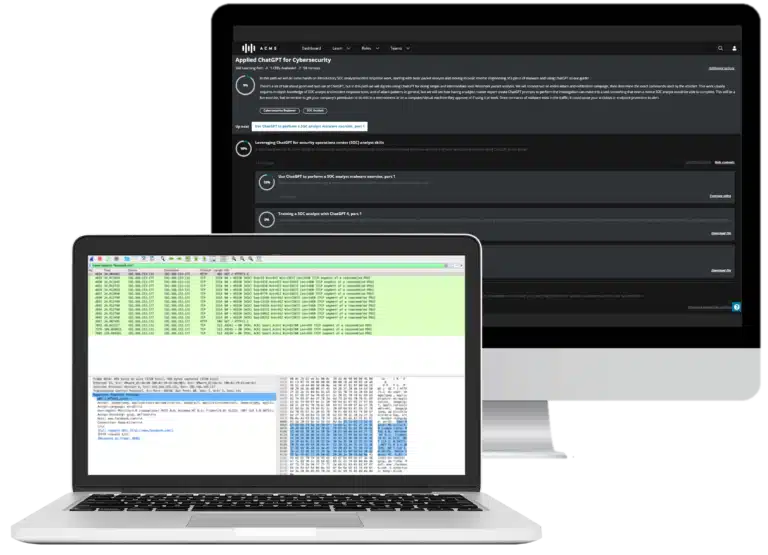How to become a penetration tester
If you are the type of person who likes a challenge and has a nose for trouble, you should think about becoming a penetration tester. With penetration testers commanding an average salary of almost $118,000 in the U.S., this is a job that is both interesting and lucrative.
So what sort of things does a pentester do and how do you become one?

ChatGPT: Self-paced technical training
What is penetration testing?
Many aspects of cybersecurity intelligence demand human input. Cybersecurity, after all, is a human-centric problem and depends on having human resources that can understand how the bad guys think. In the world of cybersecurity, the penetration tester is sometimes equated to an ethical hacker because certain aspects of the job require replication of what a malicious hacker would do.
Penetration testing, as a discipline, is extremely important in the general security strategy of an organization. It is used to spot issues and vulnerabilities in IT systems, including web applications. Generally, automated tools are used to help with the process to find security gaps in an organization's IT infrastructure.
However, many pentesters (especially experienced ones) will use manual methods to augment and extend the reach of automated tests. Pentesting essentially simulates how a cybercriminal would use security flaws to attack an infrastructure in order to obtain access to data and assets.
How to become a penetration tester
The role of penetration tester is one that requires great responsibility. You will be relied upon to have a wide knowledge of cybersecurity techniques, threat types and vectors. As the cybersecurity landscape is one of the most fluid and ever-changing industries on the planet, you will have to be prepared to be continuously updating your knowledge of the area. This means you will need to be very interested in cybersecurity and prepared to continuously learn.
You also will need to be able to understand IT systems and networks at a deep level. Understanding communication protocols is also important, as this can be a weak point in a system.
This means that being able to write software code is useful. It may not be absolutely essential, and you may not need to be really good at it but having a working knowledge of a scripting language like Python will come in useful.
Starting off
Whether you are a novice or a seasoned IT professional thinking about moving into pentesting, you should begin by reading about the subject. Use articles, textbooks and guides, and find videos on the subject — not just on pentesting but on general cybersecurity issues across the board. There are also excellent blogs by cybersecurity security gurus such as Bruce Schneier, and resources like the Hacking Articles blog.
In summary, you will be expected to understand:
- Cybersecurity: Techniques, tricks, vectors, threat profiles and the anatomy of cyberattacks. Check out OWASP’s site for cybersecurity intelligence
- Hardware and networks
- Operating systems, databases
- Applications, including web apps and APIs
- Data analysis: At least in terms of analyzing security issues and presenting solutions
Getting more hands-on
Ultimately, pentesting is a practical subject. All the books in the world and all the YouTube videos on ethical hacking will not prepare you for the real thing. You must get practice. If you have come this far, there is a very high chance you will be one of those people who will be able to easily implement your own mini test system.
Use pentesting toolkits, such as Security Onion or Kali Linux, to start performing your own pentesting for practice. They offer an encapsulated set of pentesting tools that you can use to feel your way around the practical side of pentesting.
Also get to know the Penetration Testing Execution Standard (PTES), which is a framework for pentesting. It can help you to work towards standards of operation and is a good general advisory in the field. Many jobs will require you are fully aware of this standard as well as OWASP.
Getting certified
When you are ready, you can take a course to earn an ethical hacking certification, such as the Certified Ethical Hacker (CEH) certification. This will give any prospective employer proof that you have the necessary knowledge of the area and know how to apply it practically.
It may also be beneficial to take certification courses in networking and security.
The Pentest+ certification is another option. It’s ideal to give you the know-how in carrying out penetration testing.
Penetration tester roles and responsibilities
Penetration testers are usually employed internally by an organization and will sit within a security team.
Penetration testing is not just about finding flaws in networks and web apps. It is also about communicating your findings, both to team members and management in other departments.
There may be variations in the role of pentester across industry sectors, but there are fundamental tasks that you will perform. These include:
- Network and application tests to check the general security vulnerabilities across a network. The pentester will be involved in designing these tests or keeping existing ones up to date. You will be expected to know how to implement and apply pentesting tools
- Physical security tests such as checking for disaster hardening of servers to non-cyber threats (vandalism, climate impacts and so on)
- Security audits: This is a fundamental and ongoing aspect of the penetration tester’s role. You will be expected to assess the security of a given process, protocol or system. You will also need to write up reports of audits
- General security report writing and the use of metrics from tests to help develop security strategies
- Involvement in security team and security policy review: You will need to be able to communicate with your wider team and help with security policy review
You may likely, as you progress in your career, find you are called upon to mentor new pentest entrants and others in the security team. Fostering a good communication skill set will definitely help your career.
Getting your foot on the ladder of penetration testing jobs
Once you are ready to become a paid penetration tester, you should start applying for jobs. You can find penetration testing jobs advertised in the usual online vacancy portals. Larger organizations will sometimes offer internships for those in the early stages of their career. They may not be as well-paid but give you essential experience to get an established post, often at the same company.
If you look at any of the large job vacancy portals you will see plenty of pentesting jobs available. It is not a career for the fainthearted, as it takes dedication to do it well. But if you are inclined towards the challenge of hunting for cyberthreats, it can be an exceptional career.

ChatGPT: Self-paced technical training
Sources
- Penetration Tester Salaries in the United States, Indeed
- OWASP, OWASP Foundation
- A Beginners Guide to Vulnhub: part 1, Medium
- PTES Technical Guidelines, The Penetration Testing Execution Standard





